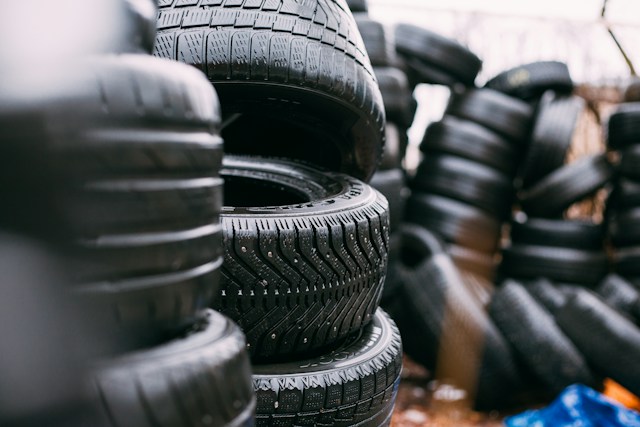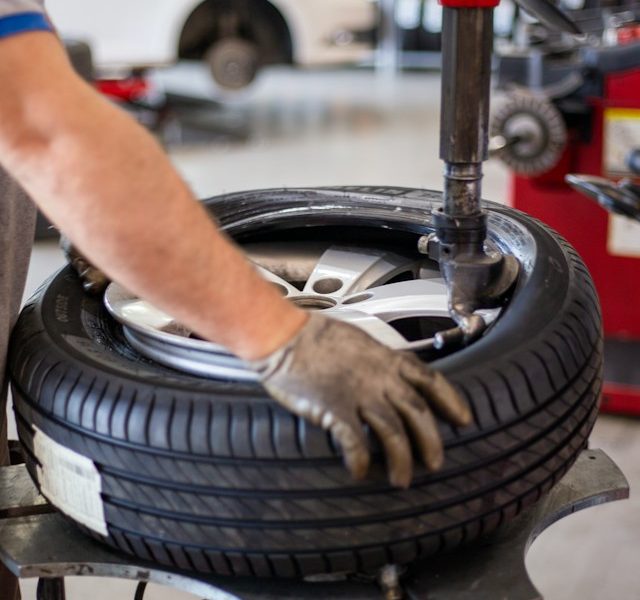Listen up, right? Tyres Glasgow. They’re the unsung heroes of the road, but let’s face it, choosing the right ones can be as confusing as navigating a roundabout blindfolded.
That’s why our blog is here—this article is meant to cut through the tyre guff and give you the straight facts.
Forget fancy marketing talk and dodgy deals. This guide is packed with no-nonsense advice on finding the perfect set of tyres for your chariot, whether you’re cruising the streets of Glasgow or tackling a country lane. Climate, road conditions, your jalopy’s type—it all plays a part, and I’ll explain it all in plain English, no boardroom jargon.
Now, tyres aren’t cheap, so understanding how long they last is key. Avoid getting caught with worn-out rubber, like a failed dodgy deal. We’ll delve into the factors that affect their lifespan, from your driving habits to how you look after them. Think of it as an investment in safety and saving your pennies in the long run.
So, are you ready to become a tyre tycoon? With this guide, you’ll gain the knowledge to make informed decisions and keep your vehicle running smoothly.
Also, understanding tyre lifespan is crucial for safety and budgeting. We dive into factors that affect tyre durability, from driving habits to maintenance. With this guide, you’ll gain insights into making informed decisions about tyres and ensuring your vehicle is equipped for safety and performance.
Understanding Tyre Selection and Lifespan: Your Guide
No single answer exists, as the decision will depend on several different factors. For instance, premium tyres typically provide superior handling and grip while wearing out faster than budget options.
Tyres Glasgow come equipped with a four-digit code on the side that indicates when they were made; two digits indicate the week and two indicate the year. Maintaining proper pressure settings can extend their lifespan significantly.
| Section | Topic | Description |
|---|---|---|
| Introduction | Understanding the Different Types of Tyre Choices | Introduction to the guide, focusing on how to choose the right tyres, relevant for Glasgow and other regions. |
| Tyre Selection | Factors Influencing Choices | Exploring factors affecting tyre choice, including climate, road conditions, and vehicle specifications. |
| Tyre Lifespan | Determining Durability | Discussing how long tyres typically last and what factors, like driving habits and maintenance, impact their lifespan. |
| Maintenance Tips | Extending Tyre Life | Providing tips on maintaining tyres to extend their life and ensure safety on the road. |
| Safety Considerations | Importance of Proper Tyres | Highlighting the safety implications of selecting the appropriate tyres for different driving conditions. |
| Cost Analysis | Budgeting for tyres | Offering insights into the cost implications of tyre choices and how to budget for replacements. |
| Local Focus | Tyres in Glasgow | Tailoring advice to Glasgow drivers, focusing on local road conditions and tyre availability in the area. |
| Conclusion | Summary and Recommendations | Wrapping up the guide with key takeaways and recommendations for tyre selection and maintenance. |
What do tyres do?
Tyres serve as the sole connection between your vehicle and the road surface, offering grip to keep you in control and providing grip to maintain control. They must do this effectively despite friction wearing away at their surfaces over time, further shortening their lifespan and decreasing performance.
How long your tyres last will depend on their use and location. Stop-and-start driving, sudden braking, and sharp cornering all reduce their lifespans, while smooth motorway driving and more conservative use of brakes can increase them considerably. Quality also has an influence; ensure you purchase premium-grade tyres.
Front tyres should last around 20,000 miles, while rear ones will usually outlive this estimate, but these estimates should only serve as a general rule since other factors could shorten their lifespan significantly.
Care and maintenance of your tyres is the cornerstone of their long-term survival, so regularly inspecting their pressure, tread depth, and storage location is key to their lifespan. To extend their longevity even further.
If your tyres are susceptible to punctures, puncture-resistant models might be beneficial, as they have been specially constructed to resist damage caused by road debris and nails. These stronger compounds will make them less vulnerable to puncturing.
If your tyres have worn down to an unusable state, it is time for replacements. If your tyres are in good condition, you can still expect reasonable mileage from them. If you do not properly care for your tyres, their lifespan will be significantly shorter. According to UK law, tyres must have a minimum tread depth of 1.6mm to remain legally roadworthy.
How do tyres wear?
A tyre’s lifespan depends on a range of external factors that are out of your control, including road quality. Rough roads with frequent braking or sharp cornering can dramatically shorten their lives. Furthermore, having the appropriate tyres for your vehicle is also vital; those designed for high-performance driving will offer better handling but wear faster than those optimised for safety on ice and snow.
Tyre profile (or aspect ratio) can have an enormous effect on a tyre’s lifespan. A lower profile increases contact between tyre and road, speeding wear-and-tear wear more rapidly but also leading to harsher rides as there’s less rubber padding the road surface to absorb bumps and ripples.
Though you cannot control the conditions of the road, you can help your tyres last longer by adopting a more careful driving style. Sudden braking or sharp cornering will hasten their wear down quickly, as will acceleration too hard or overloading your vehicle. Rotating regularly will distribute pressure more evenly among them for an extended life span.
Climate can have an impact on the lifespan of your tyres, with extreme temperatures such as heat or cold accelerating their degradation faster. Parking under shaded areas may help avoid this happening and it is smart to inspect them regularly for signs of wear and tear. Tyre wear indicators help determine when tyres have become unsafe to drive on and replacement is required.
The DOT (Tyre Identification Code) on your tyres provides details about when they were manufactured, with two-digit numbers denoting week and two-digit figures denoting year; for example, a tyre with code 1525 would have been manufactured during the 15th calendar week of 2015. Furthermore, damage to your tyres can drastically shorten their lifespan.
How long do tyres last?
As our vehicles’ sole point of contact with the road, it is crucial that we maintain good tyre health. Regular replacement should take place and inspection should also occur to detect any wear or damage to them.
Tyres wear down over time, but the rate at which this occurs depends on several factors. Your driving style has a big influence on their lifespan; driving quickly or stopping frequently may shorten it significantly compared to more conservative approaches. Furthermore, road quality plays an integral part; whether on smooth bitumen surfaces like highways or bumpy country roads, it can have an effective long-term influence.
Selecting suitable tyres for your vehicle is another factor in how long they last. Premium tyres typically offer superior handling and comfort, while budget tyres tend to offer less grip or handling capabilities.
Age can have a dramatic effect on how long your tyres last; those over 10 years old should be replaced, as they will have lost the grip necessary to grip the road safely and are likely becoming unsafe.
In order to extend the life of your tyres, it is a smart idea to ensure they are correctly inflated. This will allow them to wear more evenly and extend their lifespan. Regularly check tyre pressure and ensure it does not drop below recommended levels to prevent loss of shape or increased risks of puncturing or cracking. Furthermore, swapping out your car tyres every other year ensures an even distribution of mileage across each tyre, while the RAC suggests swapping them around every two years in order to spread wear more evenly.
What are the different types of tyres?

When it comes to car tyres, you have plenty of choices available to you. Tyres do much more than simply look good; they play an integral part in how your car handles, safety, and fuel consumption. As part of its engineering chain and the only thing in contact with the road surface itself, tyres truly represent value-for-money in this sense.
Most tyres are designed to offer a balanced combination of grip, comfort, durability, and fuel efficiency for most driving conditions and drivers. There are also specific designs tailored for off-road or high-performance use.
As more light truck, 4WD, and SUV designs come to market, tyre manufacturers respond by developing tailored tyres to maximise vehicle performance and handling characteristics. They do this using aggressive tread patterns, soft rubber compounds, and other measures to increase grip, with the downsides being higher rolling resistance, a shorter lifespan, and noisier rides than conventional tyres.
Tyre size, load capacity, wet/dry traction capability, speed rating, and warranty information are all crucial considerations when purchasing new tyres. If you don’t know the answers to these questions about selecting new ones for your car and driving habits, speaking with your local tyre retailer might help provide guidance, as they specialise in them specifically.
Remember that tyres are essential safety and performance components of your car and should always be fitted in accordance with manufacturer recommendations in terms of size and type. Furthermore, regularly checking pressure is vital, as running them at incorrect settings could compromise comfort, fuel economy, and road holding, as well as lead to premature wear.
Australian law mandates a minimum tread depth requirement of 1.6mm in order to maintain roadworthiness, with 3mm or less being sufficient for wet weather grip. If your tyres have neared this threshold, we strongly suggest replacing them immediately in order to avoid costly repairs and ensure safe driving.

Angela is a researcher and writer passionate about documenting the social, cultural, and environmental aspects of the Caucasus. Her work centers on creating engaging content that highlights the region’s unique landscapes, communities, and evolving narratives.
